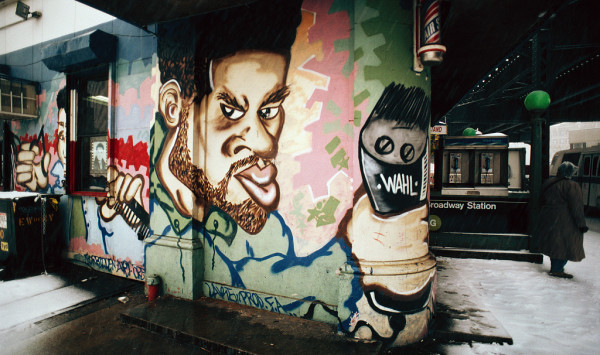THREE MEN AND A PIG (1892)
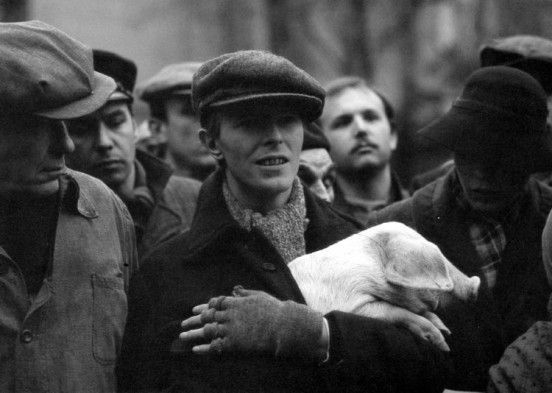
******************************************************************************************************************************** Brownstone Detectives investigates the history of our clients’ homes. The story you are about to read was composed from research conducted in the course of one of those investigations. Do you know the history of YOUR house? ******************************************************************************************************************************** (The setting of our story: The Eastern District of Brooklyn back in 1892 was a far more rural place that it is today. Comprised primarily of Williamsburg, Bushwick, and, parts of Stuyvesant Heights, the “E.D.,” as it was then called, was a semi-residential district filled with many small farmers living in frame houses and shanties, all of whom seemed to be living on the very edge of the world.) “Three men and a live, squeaking pig passed through Union avenue this morning.” The pig in the story “was an involuntary member of the quartet.” He was in the process of being stolen. “…(H)is shrill protests were heard by Policeman Farrington of the Nineteenth precinct, who traced the cries to the source. A man whom the policeman recognized as Thomas Farmer, Jr., of Union avenue and Frost street, was carrying a bag over his shoulder. “Farrington,” the story noted “gave chase and caught Farmer, who dropped the imprisoned pig on the sidewalk and showed flight. So desperate was his resistance that the officer was compelled to draw his club and a fierce fight of a few minutes’ duration terminated in the complete subjugation of Farmer.” Apparently, the two companions of the aptly named Farmer had fled. But they would not be gone […]
A BROOKLYN FIREBUG’S REIGN OF FURY (1899)
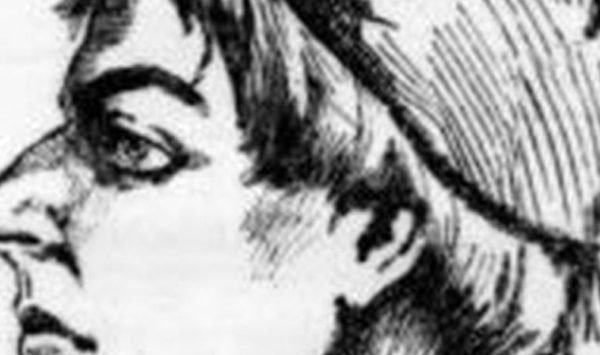
In February and March of 1899, someone was setting fires in crowded tenement houses in the eastern section of Stuyvesant Heights and Williamsburg. They started around the time that the Fire Department had classed the neighborhood of Broadway and Gates Avenue as “highly flammable.” In little more than a month, 14 suspicious fires were reported and, subsequently, doused by the department. The Brooklyn public was both fascinated and horrified by the story. Brooklynites began to watch their houses more closely and found themselves more discriminating regarding people on their street whom they did not know. Firebugs were not an unknown quantity, but this one was putting a good number of fires under his belt and fear into the heart of Brooklyn. DETECTIVE BECKER ON THE CASE! When Brooklyn Police tried to wrap their heads around the spate of arsons, wondering who could possibly be starting them and why, Detective Becker recalled a strange incident where a young Abraham & Straus delivery boy had, one day, bound and gagged himself and pretended to have been knocked unconscious by 12 thieves and had his weekly wages stolen. The boy had eventually admitted his act, but would not say why he had done it. As Brooklyn Police had nothing else really to go on, Capt. Ennis of the Ralph Avenue station detailed Becker to watch the youngster, Irving Taylor, Jr., to determine if he were somehow involved. Detective Becker knew that the 15-year-old was a smoker. He consumed eight to ten packs daily. […]
THE DIRTY, JERKY, FOUL “L” TRAIN (1892)
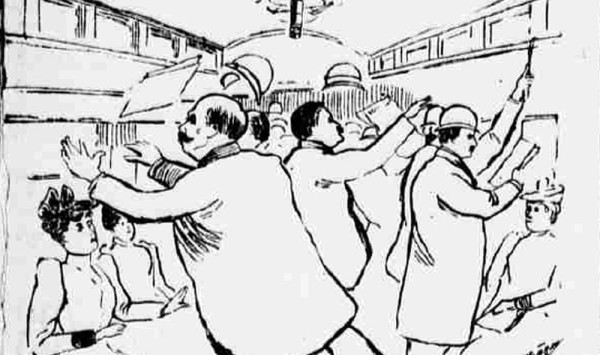
******************************************************************************************************************************** Brownstone Detectives investigates the history of our clients’ homes. The story you are about to read was composed from research conducted in the course of one of those investigations. Do you know the history of YOUR house? ******************************************************************************************************************************** In 1892, the “L” Train was killing Brooklynites. At least if you were to read Joseph Pulitzer’s New York World in the early 1890s, that’s the impression you would have gotten. The campaign that the newspaper developed to improve elevated service would have had you believe that the elevated train (the “L”) – which delivered passengers from the Brooklyn Bridge to their homes throughout the borough (and vice versa) – was just as liable to kill you as to get you safely home. If you had spoken to an “L” Train rider back then, too, you would have had further proof that all of this was true. Today, while the mode of travel and the specifics thereof, at their base, are different from those which we have at our disposal, many straphangers’ complaints concerning the slowness of the subway, the dirtiness of the cars and stations, and the lack of train cars, ring as true today as they did 125 years ago. Which begs the question, “Has anything really changed?” Here follows some of the prize-winning….ahem…..yellow journalism illustrations that may better illustrate the problems existent in 1892. “The crowding and pushing that you have witnessed to-night could be avoided if the Company would only put on more trains,” stated one rider. […]
THE “BRIDGE & TUNNEL” CROWD (1903)
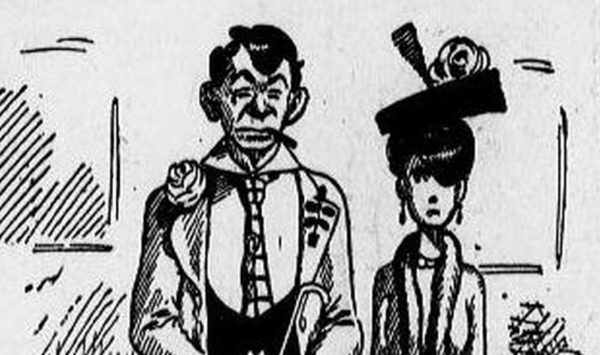
******************************************************************************************************************************** Brownstone Detectives investigates the history of our clients’ homes. The story you are about to read was composed from research conducted in the course of one of those investigations. Do you know the history of YOUR house? ******************************************************************************************************************************** In 1896, the “Bridge & Tunnel” hipster crowd took a giant leap forward. With the success of the Brooklyn Bridge – and its affect on the borough’s progress – long ago assured, construction on the Williamsburg Bridge had begun that year. Shortly after the bridge’s opening in 1903, though, the seriousness of the occasion passed, and the inevitable cartoons lampooning the “simple folk” of the outer boroughs would begin to appear. This cartoon was printed in The Evening World about a year after the opening – just long enough afterwards for the cartoonist – and everyone else who traveled the bridge on a regular basis – to have already become familiar with the “types” who crossed the bridge. It lampooned the “country mouse comes to the city” aspect of those suburbanites (rural dwellers, to those living in the city) from the outer borough of Brooklyn who were beginning at the time to patronize the offerings of the city through its novel and accessible rapid transit system. The cartoon also depicted the out-of-date dress and forced style of the Williamsburg “set.” Specifically, though, it represented the new access to the city that the commuters from the Eastern District of Brooklyn (read Williamsburg) then enjoyed due to the recent addition of the new […]
TRAPPED IN A BILLYBURG FREEZER (1902)
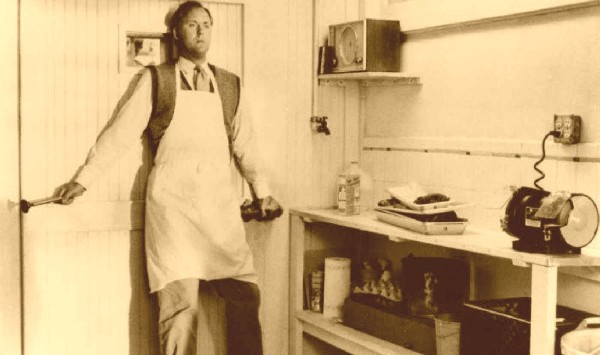
******************************************************************************************************************************** Brownstone Detectives investigates the history of our clients’ homes. The story you are about to read was composed from research conducted in the course of one of those investigations. Do you know the history of YOUR house? ******************************************************************************************************************************** If you stepped into a walk-in freezer and the door slammed shut on you – how long do you think you could hold out? In this day and age, such a scenario certainly plays itself out on the mental movie screen anytime we step into one. Such accidents happened enough that the freezer companies began to make safety locks allowing those trapped so to be able to escape without outside assistance. Back in 1902, however, you were – literally – on your own. THE SALOON AT GRAND AND GRAHAM H.H. Myers, a German saloon keeper, had moved recently from Manhattan to Brooklyn to open up a new saloon in the Dutch Town section of Williamsburg at Grand Street and Graham avenues. In his new place he “had things so arranged that he kept his beer barrels in an ice box in the cellar. One Saturday night in 1902, Myers had a thirsty crowd about the place, “all of whom were demanding more beer.” When one keg went dry, Myers descended his cellar stairs and entered the ice box to “put on” a new one. Myers had his set up such that the pipes leading from the beer taps behind his bar led down to the ice box in the cellar, where […]
THE WILLIAMSBURG FIRE DEPT (1920)
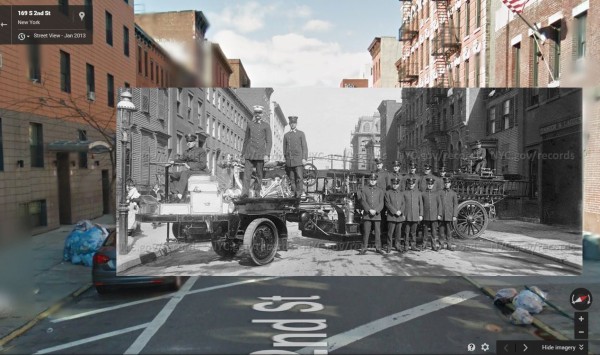
******************************************************************************************************************************** Brownstone Detectives investigates the history of our clients’ homes. The story you are about to read was composed from research conducted in the course of one of those investigations. Do you know the history of YOUR house? ******************************************************************************************************************************** From about the early 1920s, comes this black & white Throwback Thursday photograph of the “Men of Hook and Ladder 104 with a hook and ladder, 161-163 South Second Street,” superimposed on the top of a Google Map (courtesy Department of Records and Google Maps). The second pic shows the same men in front of their engine house. The firehouse was established at this exact location in 1885 and exists to this day there. Follow @BrownstoneDetec Share ———————————————————————————————————————– The Brownstone Detectives Brownstone Detectives is an historic property research agency. Our mission is to document and save the histories of our clients’ homes. From our research, we produce our celebrated House History Books and House History Reports. Contact us today to begin discovering the history of your home.
WONG SING BOW’S WHITE WIFE MINNIE (1877)
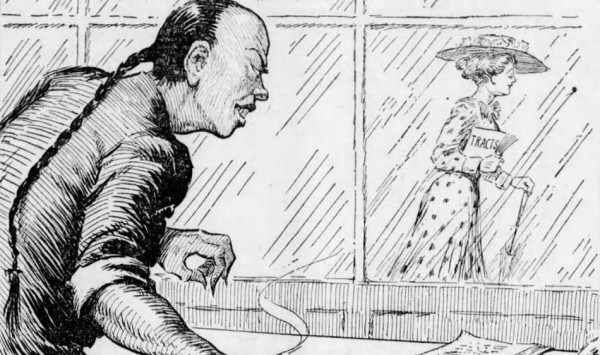
******************************************************************************************************************************** Brownstone Detectives investigates the history of our clients’ homes. The story you are about to read was composed from research conducted in the course of one of those investigations. Do you know the history of YOUR house? ******************************************************************************************************************************** In 1886, the life that Wong Sing Bow had been building up for years began to crumble before his eyes. A naturalized U.S. citizen, Wong Sing had been born “a subject of the emperor of China.” But he had been in America “long enough to save considerable money and to appreciate the beauty of Irish girls,” said one paper of the time. Wong Sing spoke English fluently and was often called upon by the authorities to interpret. With all that Wong Sing had going for him, it had originally seemed likely that he was going to have a good life. But this was the 1800s. And Wong Sing was Chinese. ANTI-CHINESE PREJUDICE IN 19TH CENTURY BROOKLYN After Wong Sing’s arrival in the U.S. around 1870, according to one paper, “the celestial youth immediately fitted himself in the groove of circumstances. “He decided to become intensely American. He shaved his cue off, doffed his Chinese garb, proclaimed his intention to become a citizen, and went to Sunday school ‘all samme like Melican man.’” Apparently, the papers, like most Americans, had no politically correct bent in those days. But the Chinese were located squarely at the bottom of the social construct – just slightly beneath the Irish and the Germans – and so […]
